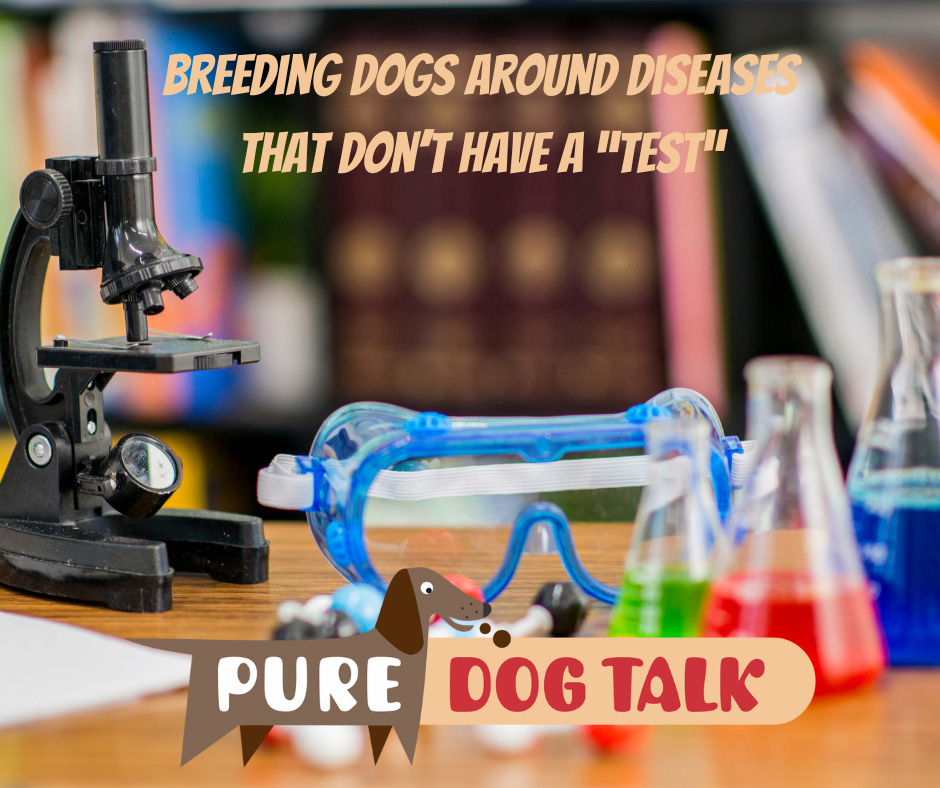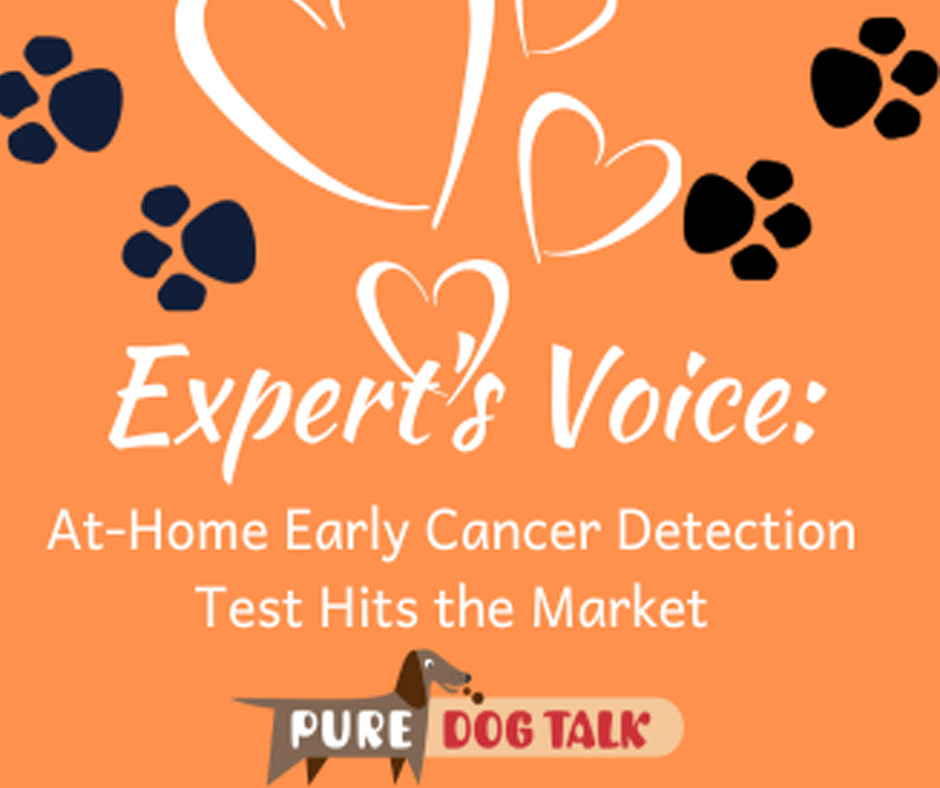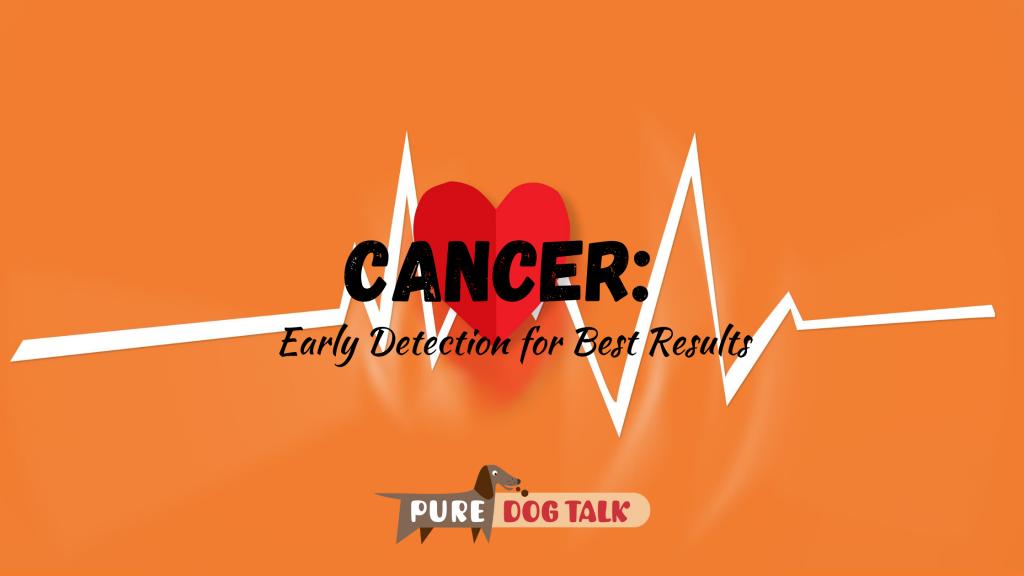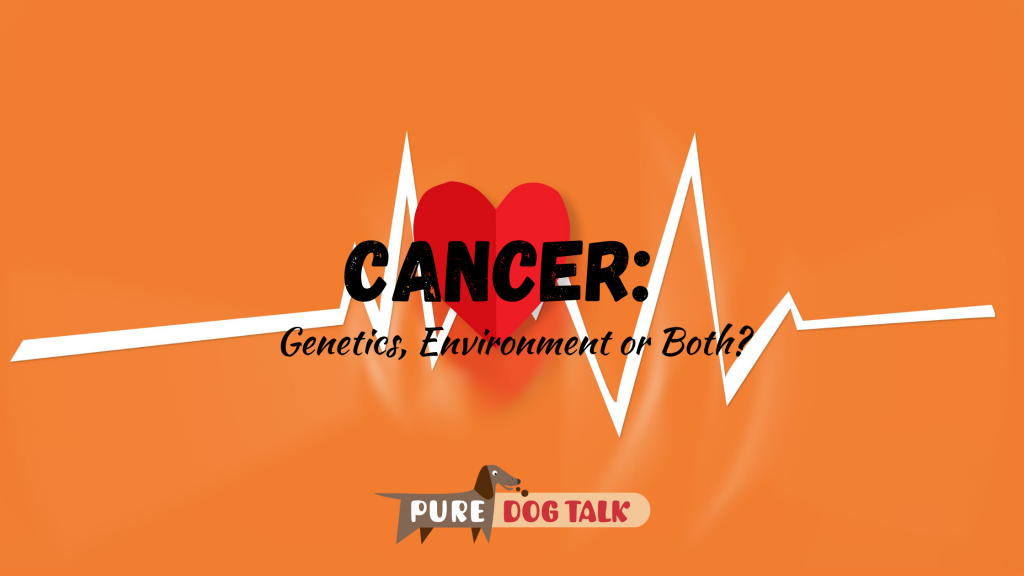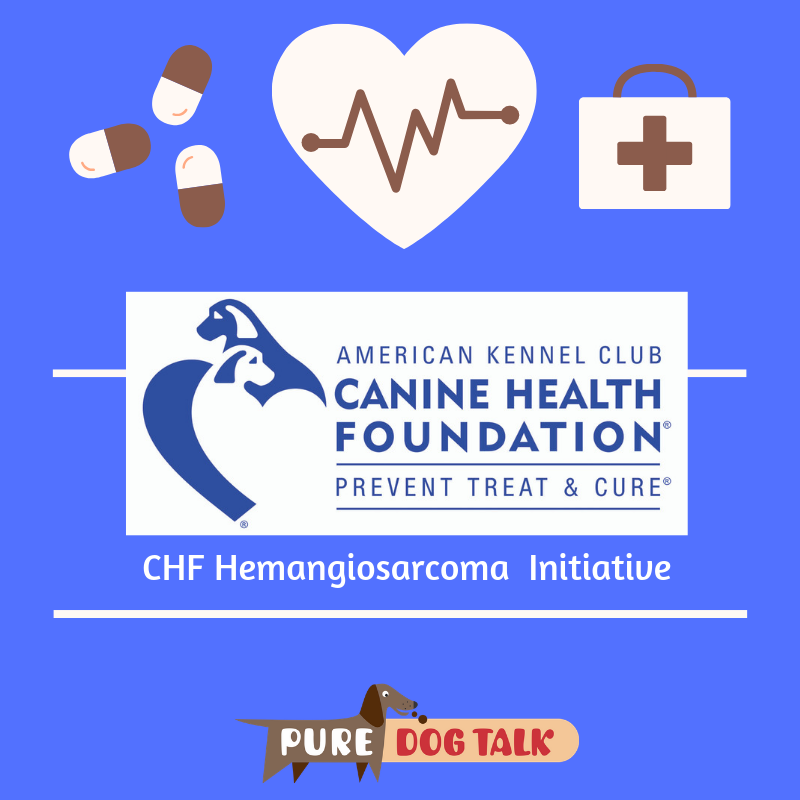652 – Breeding Dogs Around Diseases that Don’t Have a “Test”
Breeding Dogs Around Diseases that Don’t Have a “Test”
Host Laura Reeves is joined for part two of her impactful conversation with Aimée Llewellyn-Zaidi, Project Director, IPFD Harmonization of Genetic Testing for Dogs at International Partnership for Dogs.
Today’s conversation covers some of the biggest hot button diseases impacting all dogs – seizure disorders, cancer, bloat and other life-threatening issues.
Llewellyn-Zaidi offers insight, information and details about new tests coming online and the ways we can minimize risk while working with small gene pools.
“(S)ome cancers are just kind of part of dogs, just being a dog. Or sometimes they’re part of being a type of a dog, like some types of dogs are more likely to be at risk than others, whether it’s size -related or maybe they’re a herding breed, and it’s just at some point in ancient times, (when we) started dividing out into generalized proto-breeds, when we started having our wolfie looking ones and spitzy -looking ones, and we started having our molosser looking ones, and we started having our retrieving looking ones. Before they were such distinctive breeds, there would have already been selection causing inbreeding and increasing some genetic duplication to get those desirable traits.
“And you may bring some things along with that. So some of these cancers are not specific, necessarily, to your breed and they’re just specific to that type of dog.
“With cancers there are two cancer tests that are available to all dog breeds or all dog types. There is something called a C -kit somatic mutation for mast cell tumors. All of this is on www.dogwellnet.com so you can check it out. And there’s also the BRAF mutation, so invasive transitional cell carcinoma. That’s for all dogs as well. And for my dear beloved Bernese people, there’s histiocytic malignancy that’s available as a genetic test as well.
“So for some of these specific cancers and specific epilepsies, there are genetic tests available that you can use to help you maybe make some decisions or at least to eliminate what might else be going on, right? So you know if you’re not quite sure what kind of a cancer it is, the genetic test might help give you some information on that.
“All of this really comes down to how risky do you feel? We can rebuild any breed from scratch if we needed to. It would just take a lot of time and a lot of effort and a lot of consideration. So in some ways, being very radical, and I’m setting health and welfare aside for just a second, being very radical, it’s kind of up to a breed to make a choice. Do you want to keep breeding to your breed standard until you reach a point of too much poor health and inbreeding depression and then you start again?
“Or do you want to try to conserve and maintain kind of where you are now? Or do you want to try to improve or expand your genetic diversity from where you are now?
“And all three of those kind of philosophies are acceptable, assuming you’re keeping at least welfare in mind. And all three of those philosophies probably will fit all the different kinds of breeds in their unique situations.
“Followed very closely by conserving that breed type or those breed qualities that are important to you, right? That’s the point. That’s the point and the pleasure and the art side, right?
“So if you’re keeping in the back of your mind those chess moves, whether it’s ‘I’m gonna use this type for a couple of times because I really like that or I want to introduce that and then I’m gonna have a couple of litters where I go out and just kind of rebuild that diversity and then maybe go back to that type I happened to like,’ that’s how you kind of weave through the genetic variation that you have within your breed population.
“You probably can’t do that forever unless you’re very, very lucky as a breed, like you can’t do that forever, but you can probably do that for quite a long time.”
624 – At-Home Early Cancer Detection Test Hits the Market
At-Home Early Cancer Detection Test Hits the Market
Chan Namgong, founder of Oncotect, joins host Laura Reeves for a very personal discussion of the value of early cancer detection for our dogs.
Namgong launched his company in 2019 in the aftermath of his mother’s cancer diagnosis. He already knew that dogs can detect human cancer by scent. But then he learned about a group of scientists that discovered that small nematodes can detect cancerous metabolites in urine in human medicine.
“What’s amazing about these small nematodes is that they have very high sense of smell,” Namgong said. “They have more olfactory receptors than dogs, despite their small size. So what we have done is we’ve developed a platform where we are using (nematodes) to detect cancerous metabolites in dogs’ urine that contains the cancerous metabolites.
“(Nematodes) are small worms, and the scientific name of them is C. elegans. And C. elegans is actually, you know, if you are a scientist or biologist, it’s a model organism. It’s widely used in different disciplines of science. In pharmacology, chemistry, biology, you know, cancer cells, stem cell research, environmental study, because we know everything about these worms. In fact, C. elegans was the very first multi-cell organism that was ever DNA sequenced. And the way we utilize them is we can actually measure the intensity of the olfactory neuron in their head.
“We can categorize pets as low, moderate or high risk of cancer. Oncotect is a screening test, not a diagnostic test. So, this is meant to be proactive and preventive measure. And then if there’s any risk, moderate or high risk, we’ll bring you back to your veterinarian for further consultation, diagnostic tests such as x -rays or ultrasound to really confirm or deny a cancer suspicion or to identify the type and location.
“Prevention of cancer is almost impossible because we don’t know what’s really truly causing cancer. But your best strategy is find it early and treat it quickly. Diagnosing a cancer is like a putting a puzzle together. You’ve got to bring different pieces of information to really look at a big picture.
“We have primarily focused on the four most common treatable canine cancers. They are lymphoma, melanoma, hemangiosarcoma and mast cell tumors. And the reason why we focus on those four is because just due to the limited resources that we have.
“We’ve tested over 700 dogs in the last year or so. And among those 700 dogs, we have detected TCC, bladder, prostate, liver, soft tissue. So we’ve detected other cancer types, but the reason why we are not making claims for them is because we haven’t run a large enough sample size to publish any scientific paper on them, which we plan to do this year.”
423 — Cancer Specialist Provides Important Tips on Early Detection
418 – Cancer: Genetics, Environment or Both? Study Seeks Answers
Lori Cesario DVM DACVIM (Oncology), Owner, Canine Cancer Academy joins host Laura Reeves in a conversation about Cancer in dogs. Cesario breaks down what we know and what we don’t know about cancers, genetic basis, environmental triggers and more.
“I would say that we don’t know more than we know, unfortunately,” Cesario said. “I always feel like I leave people wanting a lot more when I have clients ask me why their dog developed cancer. Hopefully that will change. A lot of smart people are working really hard to find more information.
“The big picture is typically no one thing is going to 100% cause cancer in any one dog or person. So we’re looking for risk factors. So does your dog being a certain breed increase risk for developing a certain type of cancer? Or does a certain environmental component increase his or her risk for developing a certain cancer. In people we have some information about certain diets or components of diet increasing certain types of cancers. We’re really lacking a lot of that information in veterinary medicine.”
Cesario notes an important and wide-ranging study of Golden Retrievers that is seeking to answer some of these questions.
“The Morris Animal Foundation is running this study … they have 3,044 Golden retrievers participating and the goal is really to follow these thousands of Golden retrievers over their entire lifetime and get really an exhaustive amount of information. From what is going on in their environment, with their diet, with their genetics, to really determine what nutritional genetic, and environmental factors contribute to cancer and other diseases.
“Not only are they doing routine physical exams, not only are they collecting blood and hair and toenail samples on a regular basis, but they are asking the family questions like does your dog live with a smoker? Do you have carpet or hardwood floors? What does your dog eat? Does it eat vegetables? What type of vegetables? OK bell Peppers, what color Bell Peppers? How many Peppers? Does your dog swim in the pool? In a pond? At the beach? In the ocean?
“So, they’re getting as much information as possible and then they’re banking all of this data and other researchers can use the data. Then over time, they’re finding out which of these dogs develop certain diseases which don’t. We know that up to 65% of goldens will die of cancer, unfortunately, so they decided to run a parallel study called the Golden Oldies study. They are currently recruiting dogs. So basically, they’re looking for Golden Retrievers, purebred ideally, AKC registered better, 12 years old or older that don’t have cancer currently that have never had cancer.”
The link for the Golden Oldies study:
https://www.morrisanimalfoundation.org/golden-oldies-contact-form
244 – CHF Hemangiosarcoma Initiative and Matching Funds
Hemangiosarcoma Strikes Quickly and With No Warning
Canine Health Foundation (CHF) CEO Dr. Diane Brown talks with me about the most current research into hemangiosarcoma. CHF is funding a major initiative dedicated to moving the needle on this deadly disease.
Hemangiosarcoma is an aggressive, silent killer, Brown said. This particular cancer is specific to dogs and originates in blood vessels. Primary sites in which hemangio will present are the spleen and heart, Brown noted, owing to the abundance of blood vessels in those organs.
“These cancers grow quickly and quietly,” Brown said. “Once people know the dog has hemangio, generally the tumor has ruptured and the dogs bleed internally.”
No definitive genetic connection
Removing the cancer doesn’t cure the disease, Brown said. She added that all of the treatments tried over time have not improved overall survival time. Hemangio is a cancer seen often in large breed dogs, but Brown noted veterinarians are seeing it more and more frequently in all sizes and mixed breed dogs as well.
“There are higher risk breeds,” Brown said “but there is no direct, definitive genetic connection.” She added that research has so far not been able to identify a “hemangiosarcoma gene.”
“What we really need is a way to do an earlier diagnosis,” Brown noted.
To that end, CHF is spending resources investigating early diagnosis options — whether a blood test, liquid biopsy, genetic test. They are trying to find a way to diagnose the disease when it is at a “low cellularity.”
A major matching grant from AKC for $250,000 last year has been met with additional funds from the Golden Retriever Foundation, Flat Coated Retriever Foundation, American German Shepherd Dog Charitable Foundation and more.
Study participation opportunities
Owners and breeders who are interested in participating in various CHF studies are encouraged to visit the website and peruse the active studies currently seeking participation.
Join CHF in supporting these important research initiatives by attending Canines and Cocktails Thursday, 12/13 at the Rosen Center hotel in Orlando, FL. Tickets are available at the CHF booth at the dog show.
Listen to previous episodes with Dr. Brown on epilepsy, tick borne diseases and theriogenology residencies

